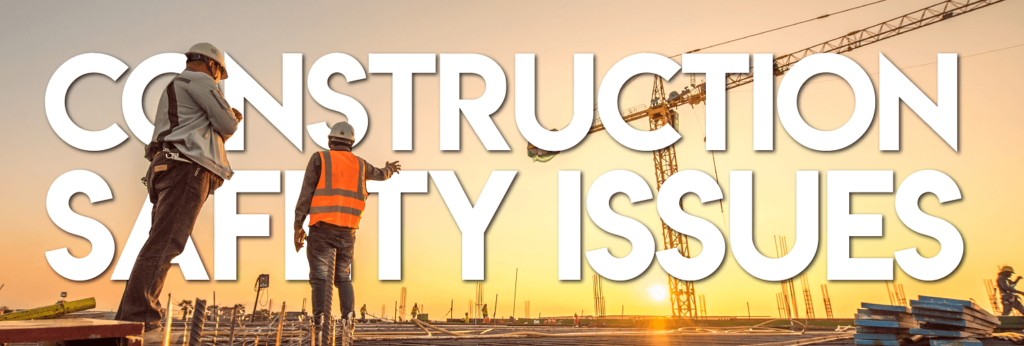3 Technological Solutions To Construction Safety Issues
Feb 10, 2020 | 42Gears Team

Although traditionally viewed as one of the least-digitized industry sectors, construction has recently benefited from new technological innovations that have improved many aspects of the industry. These improvements range from enhancing the efficiency of project management to upgrading payroll, accounts receivable, and lien filing processes. Perhaps one of the biggest and most important uses of technology in construction is improving workplace safety.
The construction sector is one of the most dangerous industries to work in, with the sector accounting for 47% of total worker deaths in the United States in 2017.
As the United States construction industry becomes larger and more technologically advanced, many industry leaders have identified implementing improved safety protocols as their top concern. The construction sector is one of the most dangerous industries to work in, with the sector accounting for 47% of total worker deaths in the United States in 2017. The Occupational Safety and Health Administration reports that 5,147 United States construction workers died while working in 2017, averaging around 14 deaths per day.
The Occupational Safety and Health Administration reports that 5,147 United States construction workers died while working in 2017, averaging around 14 deaths per day.
The biggest risks that construction workers face on a construction site- collectively known as the “Fatal Four”- include falling, being struck by an object, being electrocuted, and getting caught in between hazards. Experts estimate that eliminating the Fatal Four will save 582 workers’ lives in the United States every year. New construction technology can make that possible.
Technological innovations in workplace safety have advanced far beyond simple hard hats and safety glasses. From drones used in site inspections to exoskeletons that reduce the risk of injury, construction technology is making construction work safer. Here are some of the ways technology helps with workplace safety in construction.
1. Using drones for site surveys

Modern construction sites are larger in scope and complexity than ever before (and continue to grow), which makes it difficult to manage an entire site effectively. Site inspection can take days to finish. In addition, every site contains safety hazards that can pose a danger to site inspectors.
What if we can eliminate the need for site inspectors to put themselves in danger? Thanks to unmanned aerial vehicles, popularly known as drones, this is now possible. Developed initially for military use, drones have evolved to the more consumer-friendly role of providing unique photographic and video perspectives. As a result of this evolution, drones are now critical to improving construction site safety.
When equipped with infrared cameras and laser-based range finders, drones can conduct site surveys, look for safety hazards, and monitor construction workers, all while their human operators observe remotely from a safe location.
2. Using exoskeletons to reduce the risk of injury

Due to the nature of the job, construction workers face a high risk of straining their bodies or acquiring musculoskeletal disorders. These injuries are caused by lifting heavy objects, using heavy work tools, and using the wrong tools to do the job; thanks to new technology, construction workers can perform their tasks more safely.
To limit the strain on construction workers’ bodies, project managers can assign exoskeletons, also known as exosuits, to employees. The exoskeletons are another piece of technology developed by the military that is now seeing applications in the construction industry. These suits are metal frameworks that can be equipped with mechanical systems that can multiply the wearer’s strength and improve their posture.
Two types of exoskeletons are available—power-assisted and unpowered.
Unpowered exosuits do not use motors or actuators but rather use a mechanical harness wrapped around a wearer’s body. Depending on the design, unpowered exosuits may be wrapped around the arms, shoulders, chest, waist, and thighs. The most common mechanism uses erector sets usually made with a strong material such as carbon fiber that acts as a counterweight and distributes the weight of an object carried by the wearer away from the lumbosacral region to the pelvis or even the floor for stability.
On the other hand, power-assisted exosuits are equipped with a network of motors and sensors that multiply the wearer’s strength. These can be powered by electric motors, pneumatic air muscles, or hydraulics that are designed to sense the wearer’s movement and signal the motors to augment the motion.
3. Using virtual reality technology in realistic safety training

Nothing beats safety training in eliminating fatalities and injuries in the construction industry. Many of the common safety hazards found at a construction site can be avoided if employees know how to handle them. However, safety memos and seminars can only do so much. Traditional lectures or video presentations may not be engaging enough for employees (especially younger ones) to retain the information that needs to be kept in mind while doing work on-site.
Virtual reality (VR) technology removes the limitations of the traditional training process and provides an immersive way for employees to learn about the safety hazards present in construction work. VR technology can simulate a realistic sensation of height, stress, and other psychological hazards that cannot be replicated in traditional safety training.
For instance, VR can simulate a worker entering a lift and show that they are being transported up where they need to fulfill certain tasks. Monitoring the worker’s heart rate and stress levels gives trainers insight into the worker’s experience, which they can use to help workers manage stress. Trainers can even create VR scenarios that are tailored to a specific construction site.
VR technology may seem too futuristic or distracting for construction firms to handle, but with the help of a unified endpoint management solution (UEM) like 42Gears SureMDM, you can ensure that VR headsets run only pre-approved applications.
Project owners and managers share one goal: to eliminate workplace fatalities and injuries in the construction industry. With innovations like drones, exosuits, and virtual reality, the industry is getting closer to reaching this goal.
About the Author:

Patrick Hogan is the CEO of Handle.com.
Subscribe for our free newsletter






